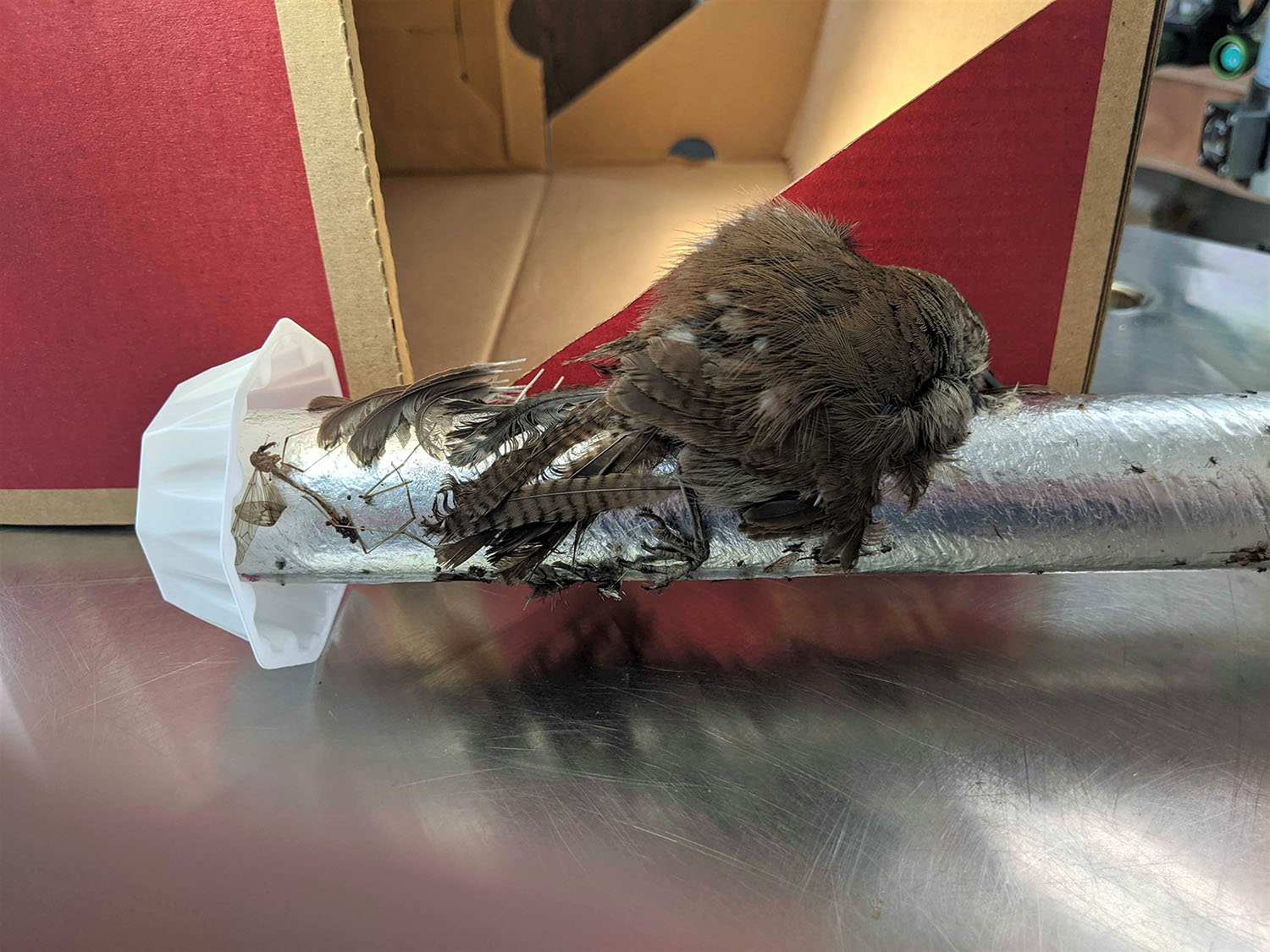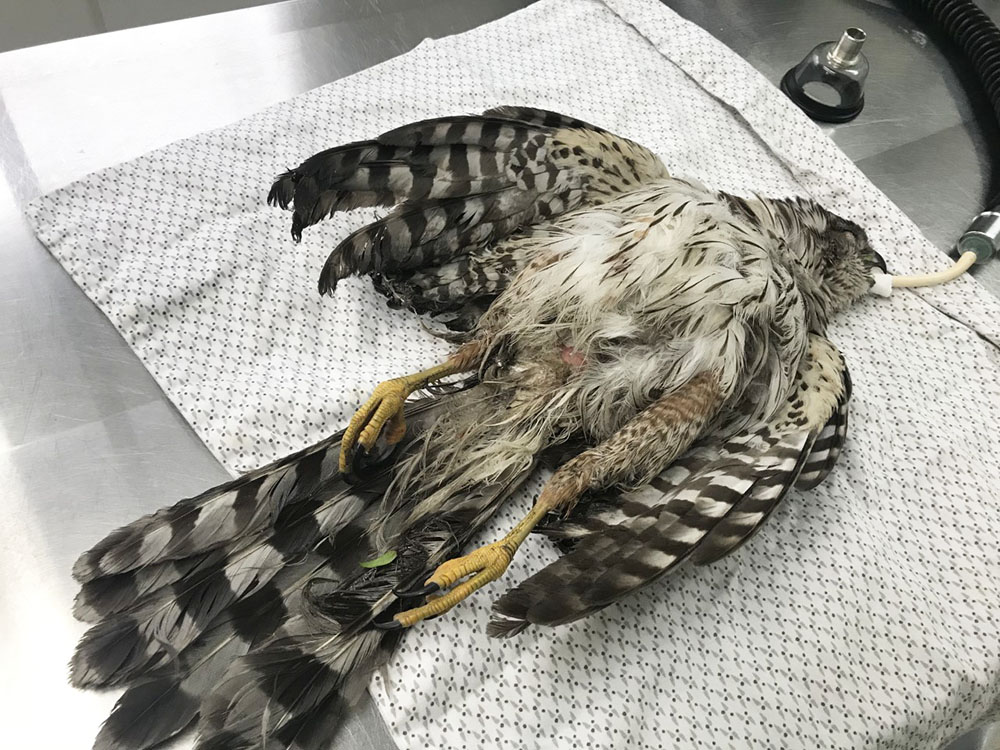Help Wildlife Avoid a Sticky Situation
By Dr. Stephany Lewis, Veterinarian

A Wren stuck to a glue trap
Photo by Samantha Orzech
Every year, California Wildlife Center receives approximately twenty animals that have been caught in glue traps, or “glue boards:’ Some glue traps come as strips or tubes that are hung up to catch flying insects, while others are placed on the ground to catch crawling insects and rodents. Glue traps are used as a method of pest control, but unfortunately, these traps are indiscriminate. CWC most commonly receives small songbirds that have been caught in these traps, but we also see lizards, snakes, small mammals, and even small hawks and owls who have suffered from traps. Most of these animals eat insects and rodents, so these traps end up eliminating the most natural form of pest control!
When an animal gets caught in these traps, sadly their death is not quick and painless. They suffer for hours or even days, as they struggle and slowly die of exhaustion, hunger, and thirst. As they struggle to escape, they will often sustain painful injuries. Bird feathers also become severely damaged and mangled from the glue. If not discovered and freed from the trap quickly and carefully, the animal will die.
If an animal becomes stuck to a glue trap, they always need professional medical treatment. If you find a live animal caught in a glue trap, we do not recommend that you attempt to free the animal yourself. Without proper care and training, it is possible to injure animals even more while attempting to free them. Simply place a box with ventilation over the animal and keep it in a quiet and safe place while you contact your local wildlife rehabilitation center and transport the animal to receive help.

A Cooper’s Hawk covered in glue from a trap
Photo by Stephany Lewis
When we receive animals caught in glue, we carefully remove them from the glue with the help of a small amount of oil. In some cases, we may sedate the animal for this process to help alleviate stress and minimize struggle. The animal is then assessed for injuries and feather damage, and provided fluid and nutritional support, as well as pain medications and antibiotics if necessary. We wait several days before removing the remaining glue off their feathers, fur, or scales to ensure that the patient is stabilized before starting this process, because being washed is extremely stressful for a wild animal. For this reason, sedation or anesthesia are typically provided for the patient during the washing process. The glue is removed with a small amount of canola or a soy-based oil. The oil then must be washed off with dish detergent in warm water. The animal is dried and placed in a warm incubator to recover. Once the animal is clean and dry, they are moved to an outdoor enclosure to ensure that they can exercise and fly and can be acclimated prior to release.
There are many ways you can help wildlife avoid this situation! Please never use glue traps, sheets, or boards, and work with a reputable pest control company that does not use glue traps or poisons. A responsible pest control company will focus on natural and humane exclusion and deterrent methods and create a pest management plan that is best for the health of your family, pets, and wildlife. Educating your friends and family about the dangers of inhumane pest control methods is also an easy and important way for everyone to help our wildlife.

Thank you for this article, its so important for people to understand how terrible these traps, as well as poisons are to our wildlife. I have shared it to help spread the word.